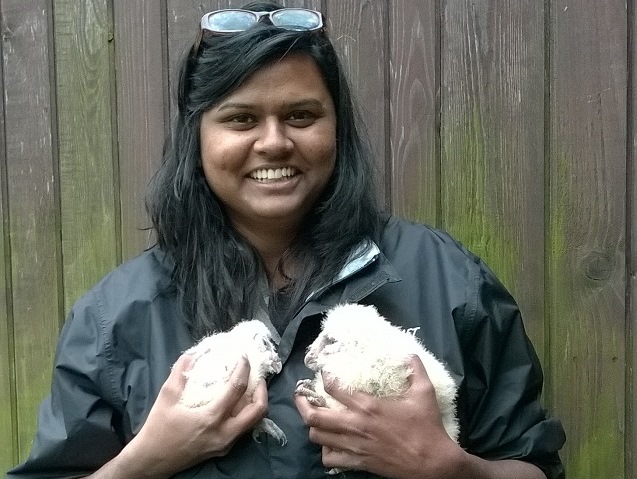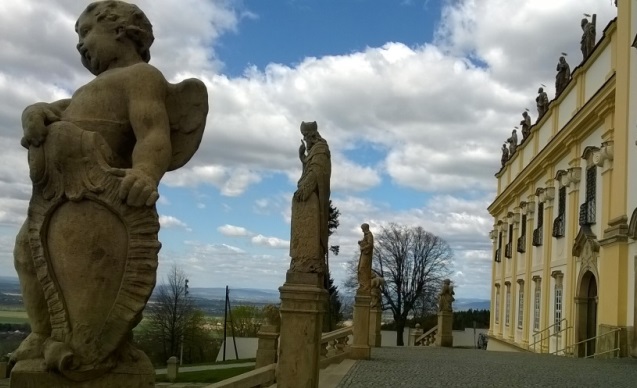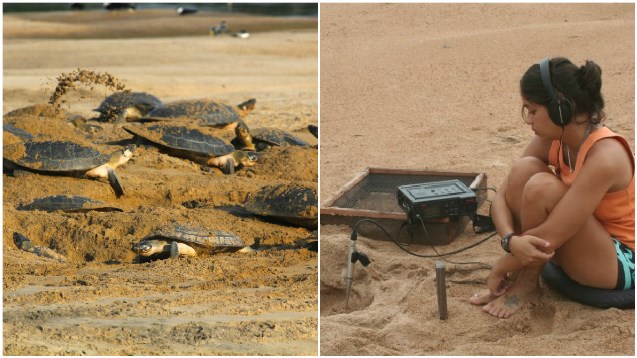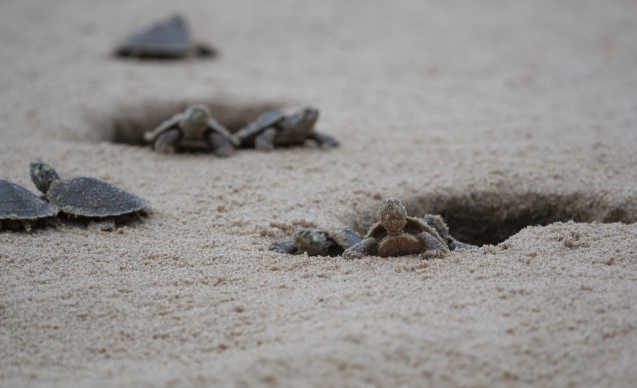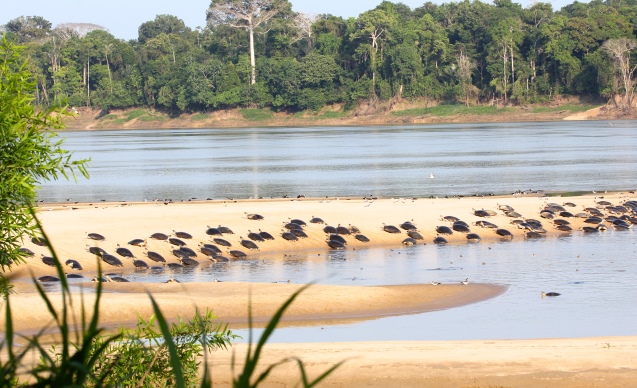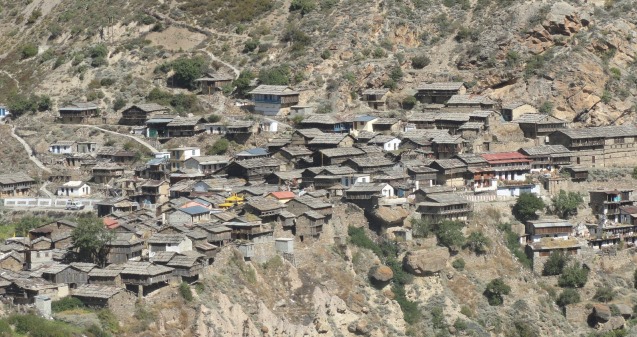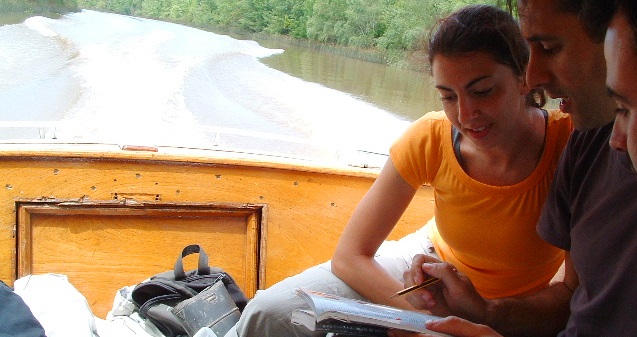By Henry Rees, CLP Programme Officer
Not long ago, when I was at a very early stage in my career, I had quite straightforward beliefs about biodiversity conservation. Back then, I saw very little overlap between the human and ecological worlds. My understanding of conservation was simply that these worlds should be kept apart where possible and that this was the only way to prevent further degradation. Now, with more hindsight, I can say with certainty that this view is limited.
Below I reflect on how broadening our perspectives, and finding a more holistic understanding of conservation as a system, could help us begin to unlock a healthier, more protected planet for future generations.
 Henry Rees, CLP Programme Officer © Henry Rees
Henry Rees, CLP Programme Officer © Henry Rees
What do I mean by a ‘system’?
A system can be defined as “a collection of related components that interact with one another toward a greater whole and a common goal.” Early on in my career, I began to realize the power of systems-thinking: a discipline that helps us reveal the different components of a system and understand how they interact. Often used in other sectors like technology and engineering, it is now gaining traction in the conservation world, and it appealed to me as an effective tool for diagnosing problems that don’t have obvious, easy solutions.
The ‘blue jumper’ analogy helps to visualise a systems-thinking approach. You can ask: what components of a blue jumper come together to make the whole thing?
First, there are the threads, each of which is important and interwoven in such a way to give the jumper its unique structure. Other components are also at work. The blue dye and materials are also present and interacting. The jumper wouldn’t be the same without all of these different elements.
Employing systems thinking on our blue jumper may reveal previously undiscovered components and questions. Where were the materials sourced from? Where was it made? By whom? Why did they make it? And so on.
The list of components can be extensive, and some are more important than others. But, ultimately, if any of them are affected, then this could cause a chain reaction and dynamically affect the other components in ways you may never have thought possible. The blue jumper could be compromised for good.
Systems thinking and conservation
Starting to think about conservation as a system was a big turning point for me. I realised that using this approach opens up a range of seemingly infinite components that we can look at to find solutions to our most pressing environmental problems.
This realisation gave me hope, but it also helped me begin to comprehend the problems that we face. The systems in which we must intervene to protect biodiversity are complex, consisting of both ecological and social components.
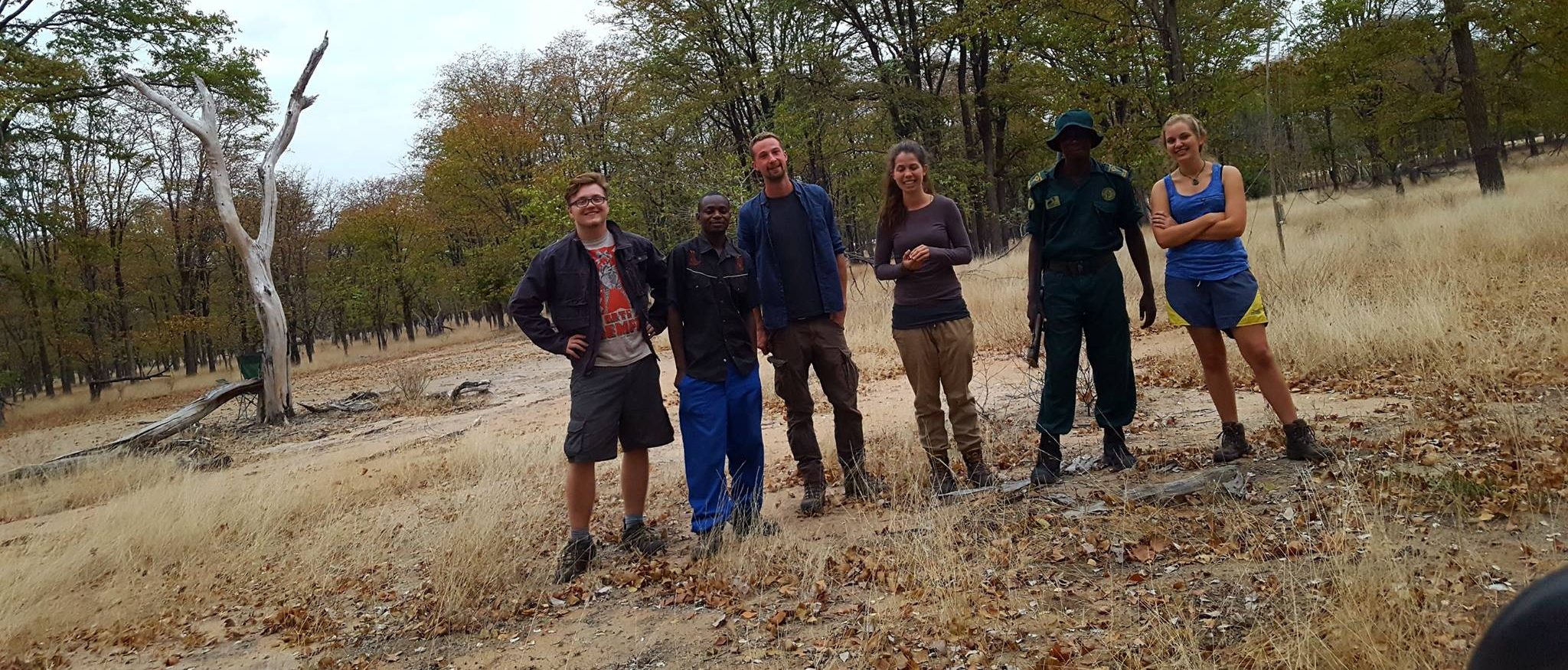 Henry (far left) with the African Bat Conservation research team in Malawi © Henry Rees
Henry (far left) with the African Bat Conservation research team in Malawi © Henry Rees
Research has shown that if we wish to effectively intervene, we must first develop a holistic understanding of these components, including the varied needs, perspectives and values of the people involved.
As has been shown in conservation countless times before, intervening without considering these interacting values may lead us to fail in our mission to protect biodiversity.
Our actions may be linked to and have unintended consequences elsewhere in the system. Pulling one stray thread in your blue jumper may cause the rest of the threads to snag and eventually the whole thing will unravel.
Building a more complete picture of conservation
It is impossible for any one person to identify all of the hidden components of a system. They will only be able to recognise certain components and interactions that have some relation to their own perceptions and biases, which are informed by their unique life experiences.
So, the only way we can ever hope to achieve a holistic understanding of a system is by talking to and working with others.
As a programme dedicated to building the capacity of early-career conservationists, CLP works to achieve levels of collaboration not often seen in the conservation sector. We are a close partnership between three organisations (FFI, BirdLife and WCS) and we each have strong lines of communication and co-operation with one another.
Through our annual Team Awards, we fund and train exceptional conservationists leading applied biodiversity projects that seek tangible, long-term solutions to the world’s most pressing conservation challenges. Many of our alumni have gone on to deliver remarkable conservation impacts, most recently showcased in our latest annual report and in our News pages.
Each year, we host awardees at key events and at our regional and international training courses, where they get invaluable opportunities to meet peers and establish long-lasting friendships and potential collaborations.
This year, during the pandemic, we continued to form these important links in our first-ever online international Conservation Management & Leadership course, which has connected more than 30 conservation leaders from several countries including Kenya, Argentina, Georgia, Vietnam, Bangladesh, South Africa, India, Bolivia and Tajikistan (to name just a few!)
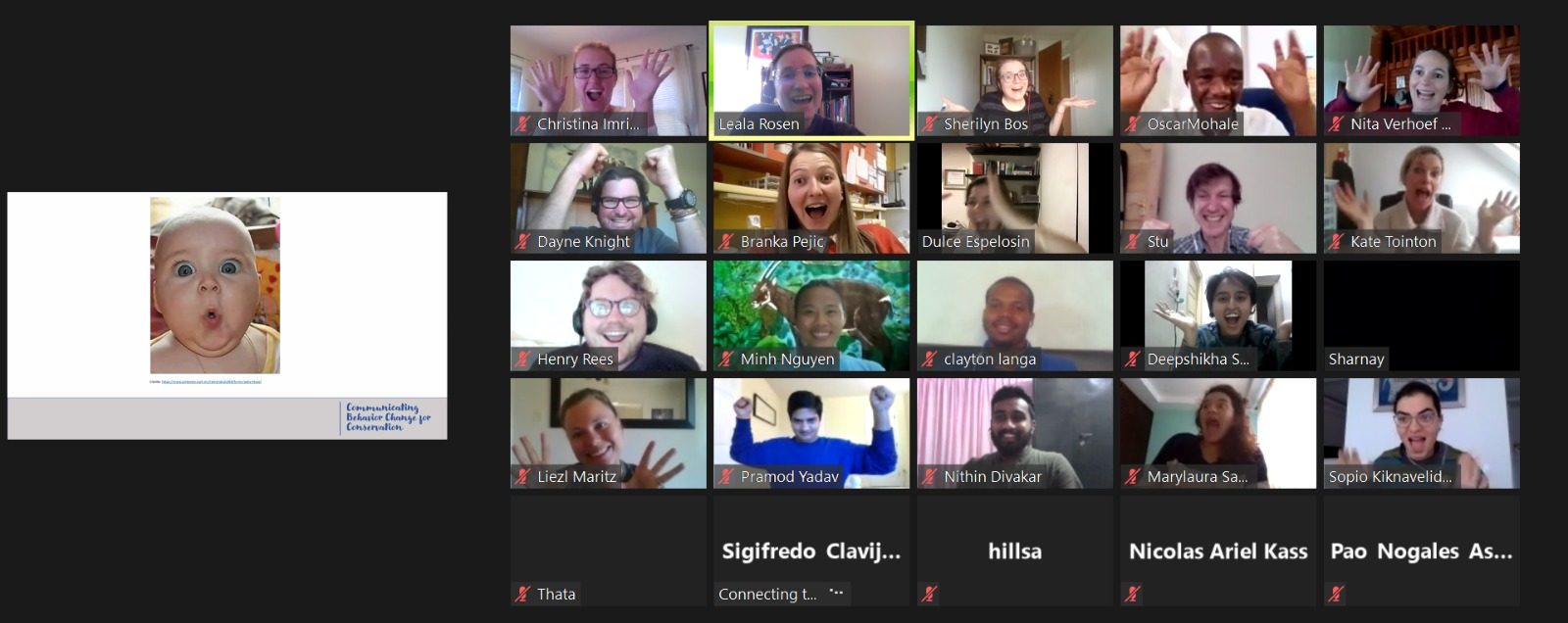 This year, CLP held its first-ever online international Conservation Management & Leadership course, which established links among conservationists around the world.
This year, CLP held its first-ever online international Conservation Management & Leadership course, which established links among conservationists around the world.
Collaborative thinking and action are key
We are all vital components of the systems in which we operate and we each see these systems differently. In this way, collaborative thinking and action are essential to understanding and combating the complex problems facing biodiversity. By taking the time to acknowledge and understand the perspectives of others, our alumni are able to build a more complete picture of their projects and the challenges they need to overcome. Only in this way can we not only keep our ‘blue jumper’ from unravelling, but also ensure the threads, and the connections between them, are strong and effective enough to last.
About the author
About a year ago, Henry Rees joined the CLP team as a Programme Officer at Fauna & Flora International (FFI) in Cambridge, UK. Before joining CLP, he had completed a BSc in Zoology and an MSc in Conservation Science and worked as a wildlife surveyor. Born and raised in London, he grew up in a family who instilled in him a deep love of nature. Working in conservation had been a dream that had motivated him for most of his life, but it wasn’t until he studied conservation formally that he began to view it as an interconnected system.

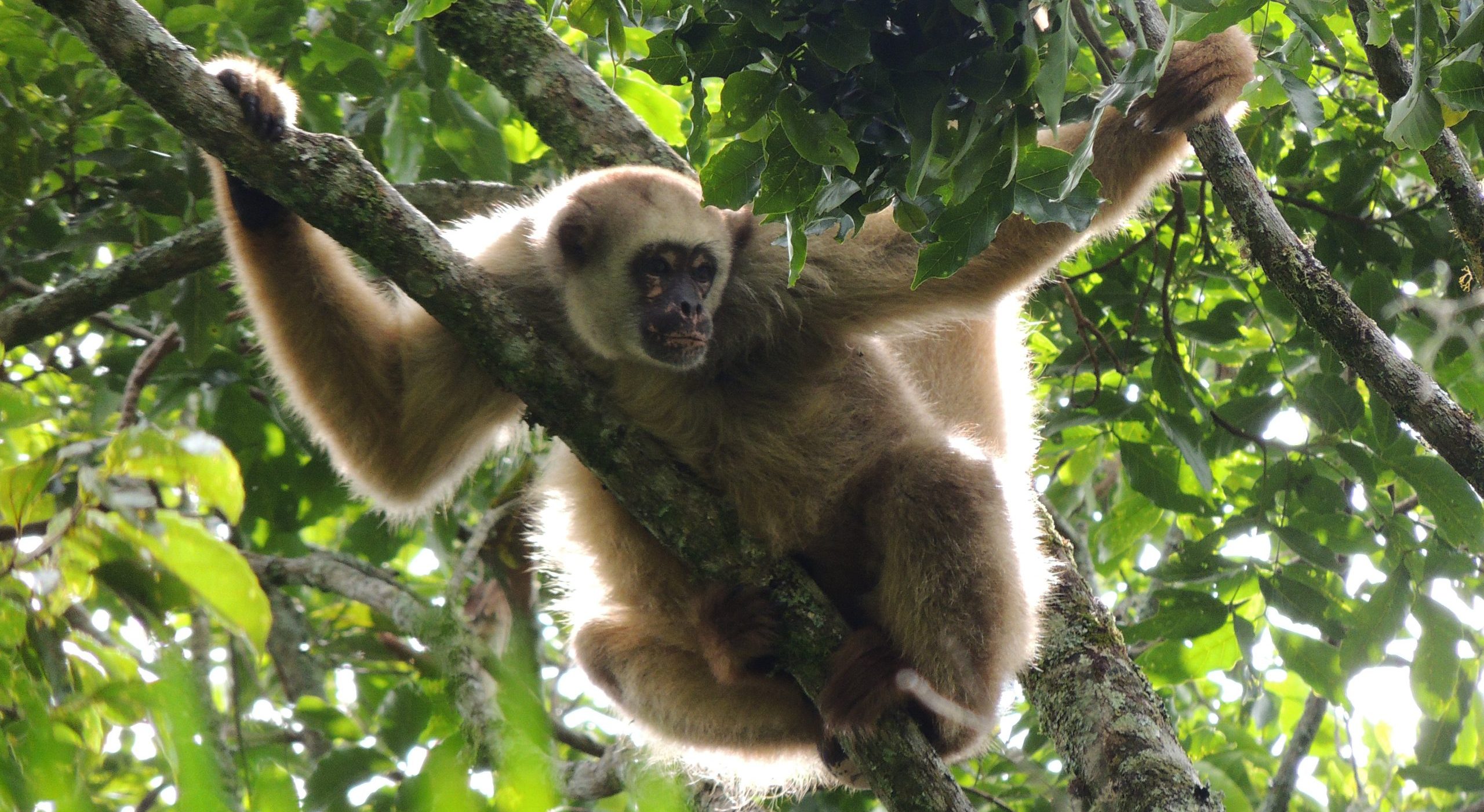 Yellow fever is one of the main threats to the survival of Critically Endangered northern muriqui monkeys © Rodrigo Silva
Yellow fever is one of the main threats to the survival of Critically Endangered northern muriqui monkeys © Rodrigo Silva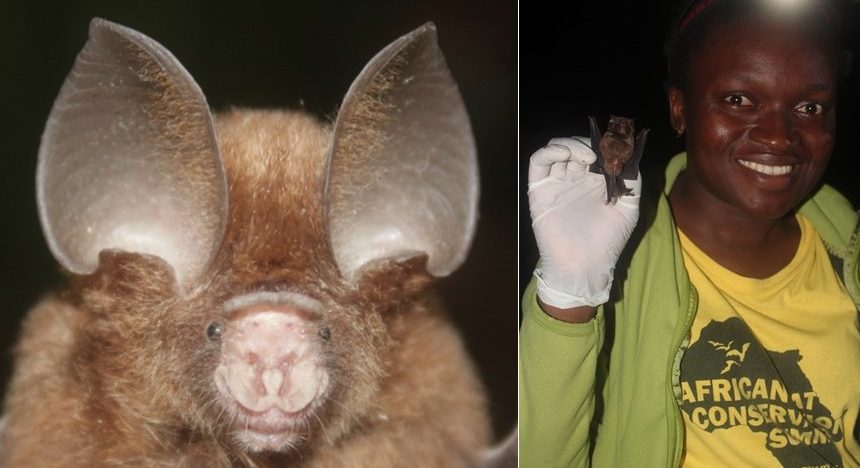 The only known population of Endangered short-tailed roundleaf bats in Nigeria was discovered by 2020 CLP awardee, Iroro Tanshi. © Chidiogo Okoye/SMACON (left image) © Benneth Obitte/SMACON (right image)
The only known population of Endangered short-tailed roundleaf bats in Nigeria was discovered by 2020 CLP awardee, Iroro Tanshi. © Chidiogo Okoye/SMACON (left image) © Benneth Obitte/SMACON (right image)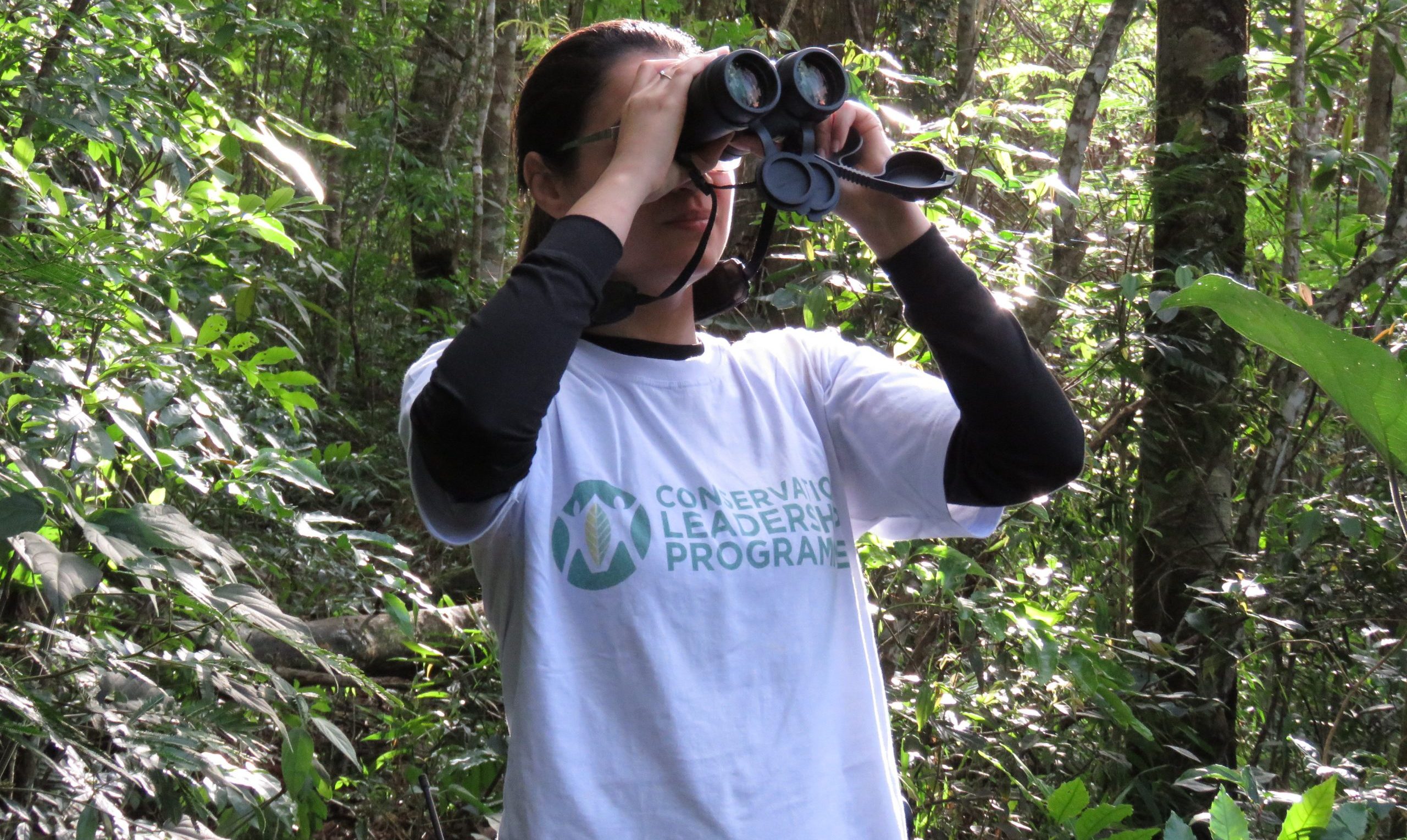 Dr Mariane Kaizer during fieldwork in the Caparaó National Park, south-east Brazil. © Francisco Homem.
Dr Mariane Kaizer during fieldwork in the Caparaó National Park, south-east Brazil. © Francisco Homem. Tigress with cub in Ranthambore Tiger Reserve, India. Photo credit: Aditya Dicky Singh
Tigress with cub in Ranthambore Tiger Reserve, India. Photo credit: Aditya Dicky Singh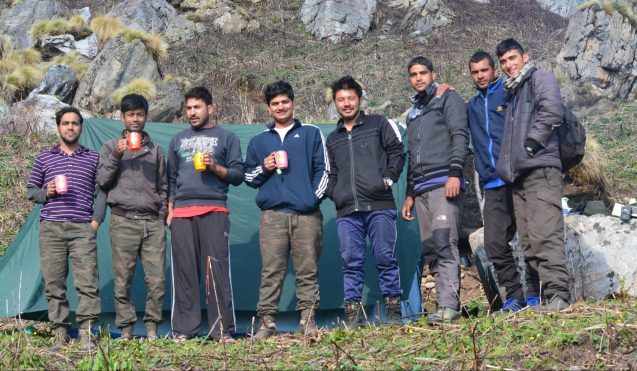 The CLP project team in the Nanda Devi Biosphere Reserve field site. Photo credit: Anonymous
The CLP project team in the Nanda Devi Biosphere Reserve field site. Photo credit: Anonymous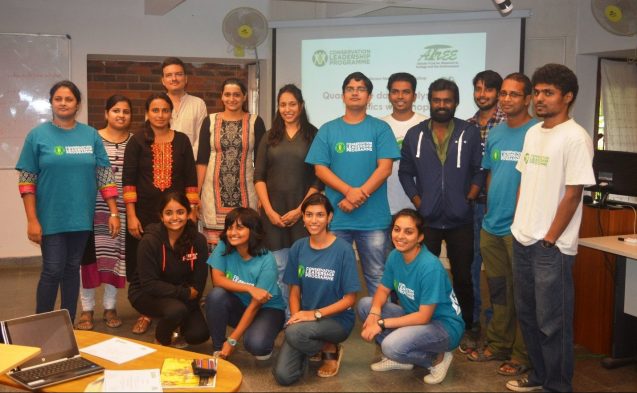 CLP alumni attending a statistics workshop at ATREE, Bangalore. Photo credit: Anonymous
CLP alumni attending a statistics workshop at ATREE, Bangalore. Photo credit: Anonymous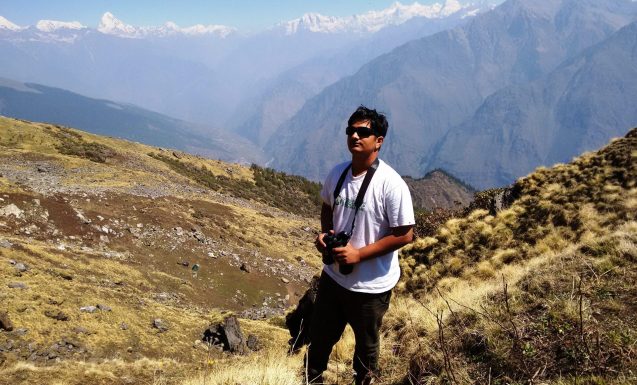 Pramod Yadav conducting field work in the Nanda Devi Biosphere. Photo credit: Manendra Kaneria
Pramod Yadav conducting field work in the Nanda Devi Biosphere. Photo credit: Manendra Kaneria Charles Emogor and his PhD study species, the Endangered white-bellied pangolin (Phataginus tricuspis). Photo credit: Charles Emogor.
Charles Emogor and his PhD study species, the Endangered white-bellied pangolin (Phataginus tricuspis). Photo credit: Charles Emogor.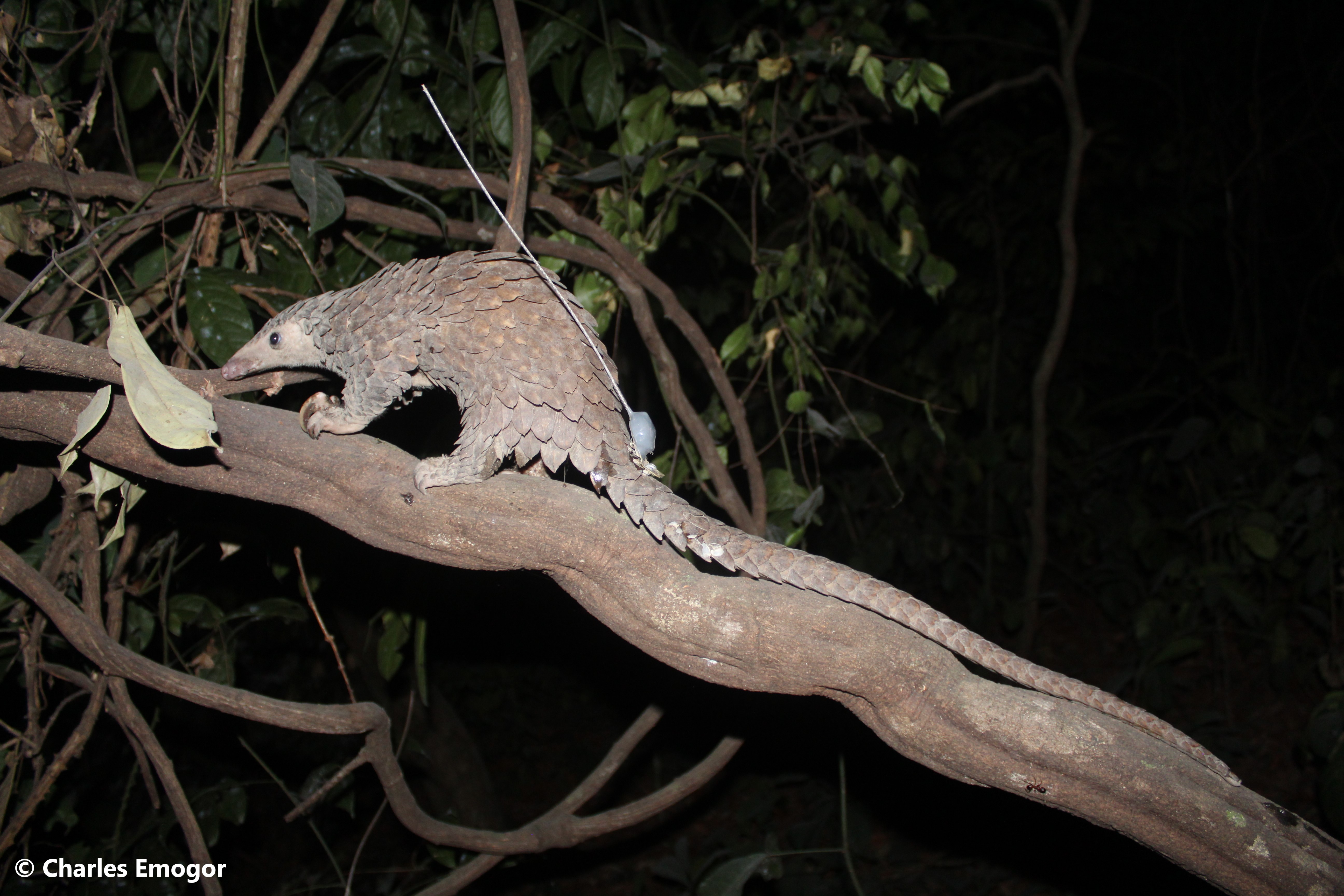 Abacus: a male white-bellied pangolin (Phataginus tricuspis), weighing approximately 1.95 kg, tagged with VHF transmitters as part of Charles Emogor’s PhD research.
Abacus: a male white-bellied pangolin (Phataginus tricuspis), weighing approximately 1.95 kg, tagged with VHF transmitters as part of Charles Emogor’s PhD research.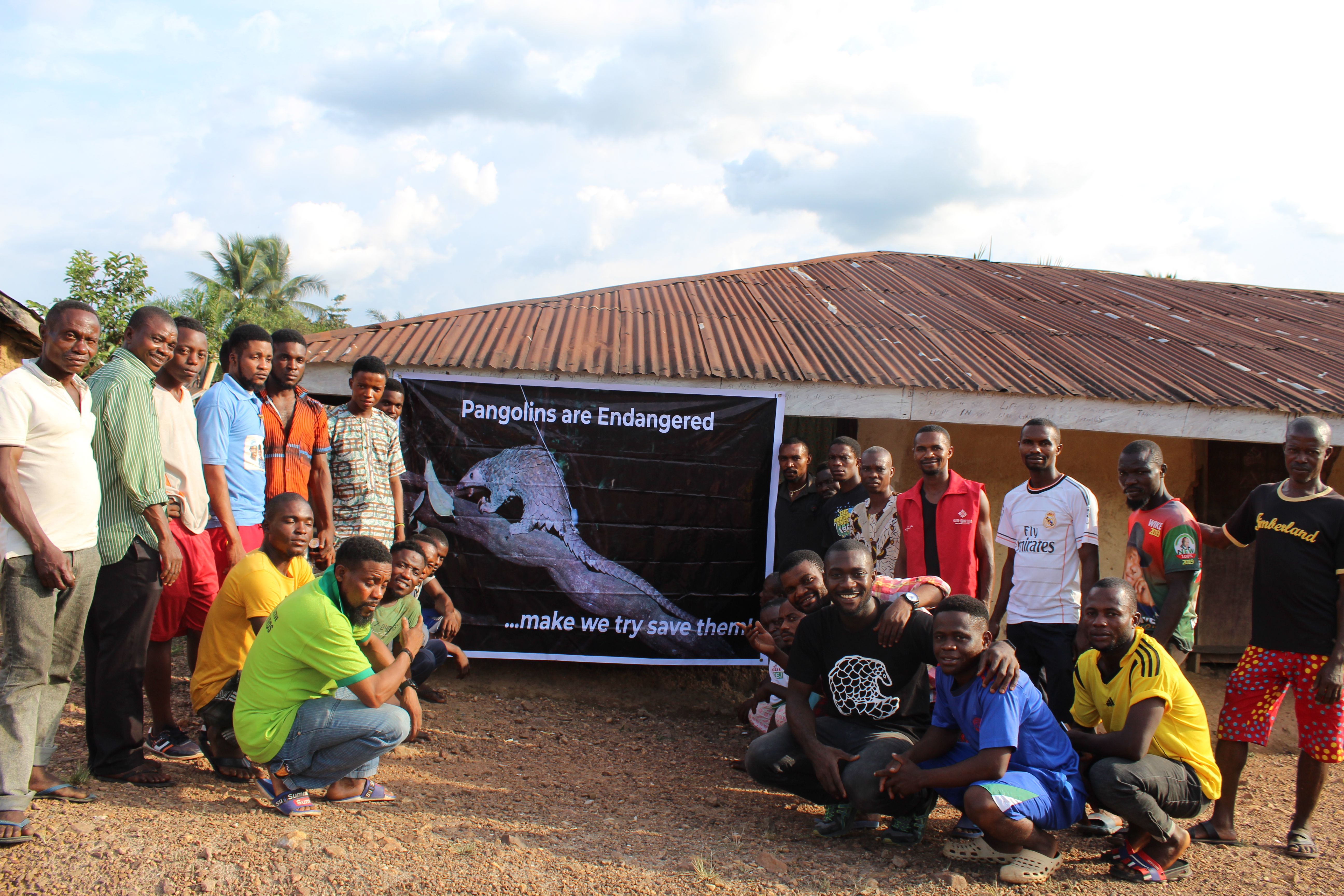 A meeting with a group of local hunters in one of the communities surrounding the Cross River National Park in Nigeria. Photo credit: Charles Emogor.
A meeting with a group of local hunters in one of the communities surrounding the Cross River National Park in Nigeria. Photo credit: Charles Emogor.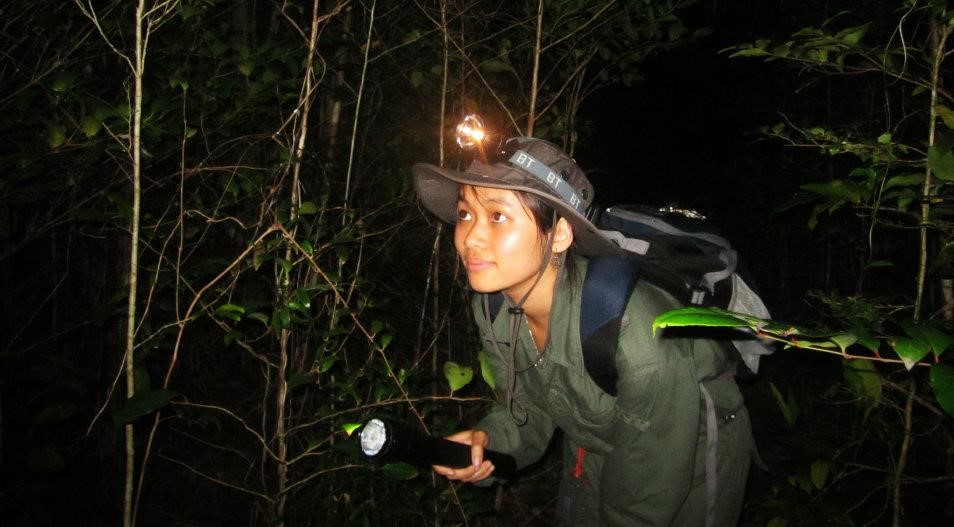 Trang Nguyen, founder and Executive Director of WildAct, in Cambodia during her CLP internship in 2014. Photo credit: Trang Nguyen.
Trang Nguyen, founder and Executive Director of WildAct, in Cambodia during her CLP internship in 2014. Photo credit: Trang Nguyen. A female volunteer for WildAct holding the organisation’s badge. Photo credit: Trang Nguyen.
A female volunteer for WildAct holding the organisation’s badge. Photo credit: Trang Nguyen. Rhinoceros hornbill chick fledged from nest box in 2019. Photo by Sanjitpaal Singh/
Rhinoceros hornbill chick fledged from nest box in 2019. Photo by Sanjitpaal Singh/ In front: Sanjitpaal Singh (left) and Ravinder Kaur (right). At the back: Amidi Majinun (left) and Helson Hassan (right). Photo by Sanjitpaal Singh/
In front: Sanjitpaal Singh (left) and Ravinder Kaur (right). At the back: Amidi Majinun (left) and Helson Hassan (right). Photo by Sanjitpaal Singh/ Eddie Ahmad and Sudirman from HUTAN/KOCP placing a nest box in the tree. Photo by Sanjitpaal Singh/
Eddie Ahmad and Sudirman from HUTAN/KOCP placing a nest box in the tree. Photo by Sanjitpaal Singh/ Rhinoceros hornbill and nest box. Photo by Sanjitpaal Singh/
Rhinoceros hornbill and nest box. Photo by Sanjitpaal Singh/